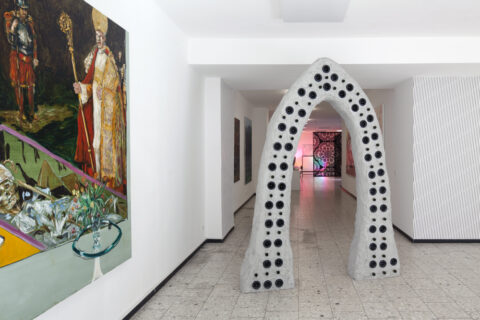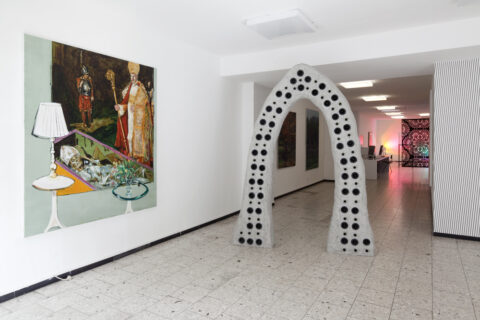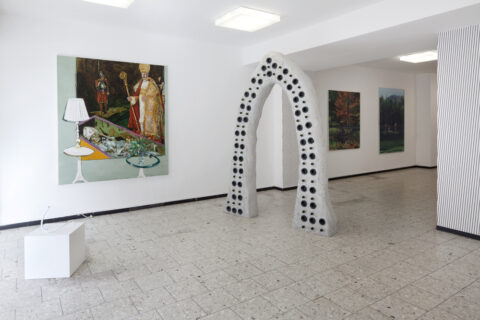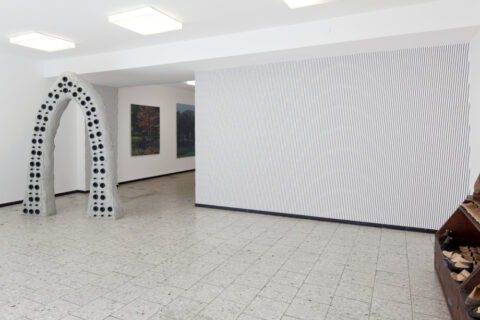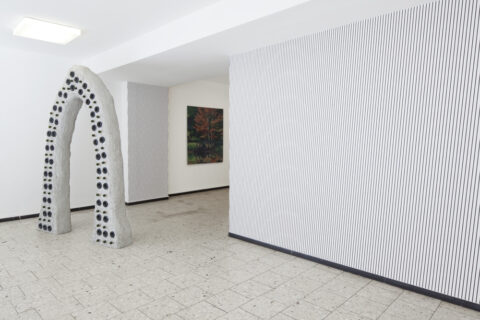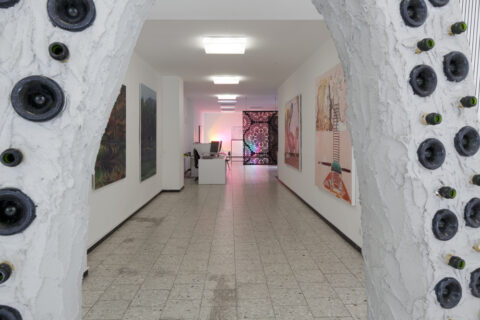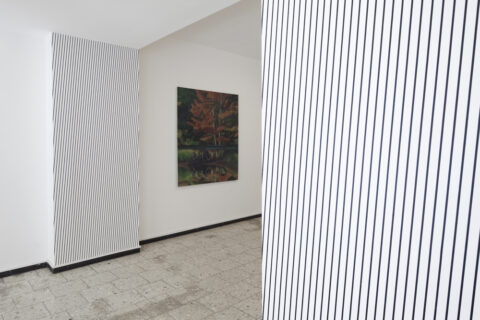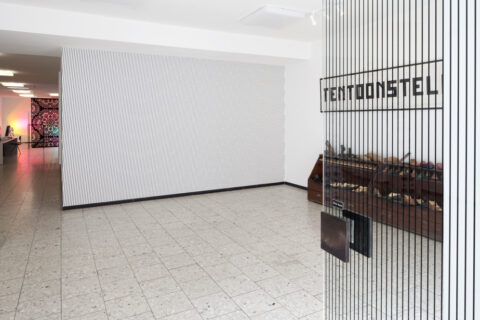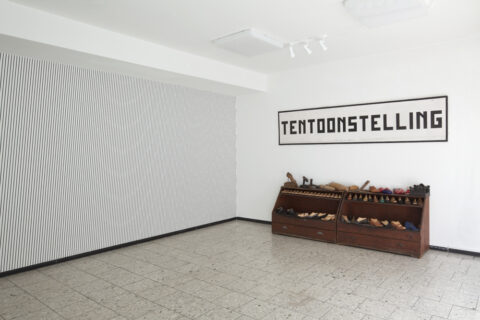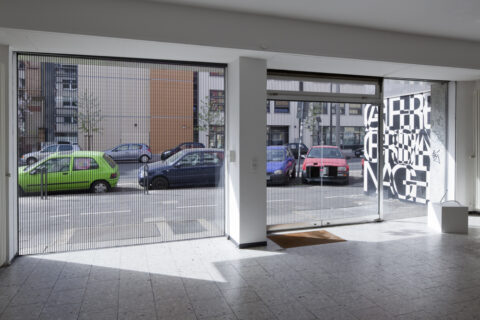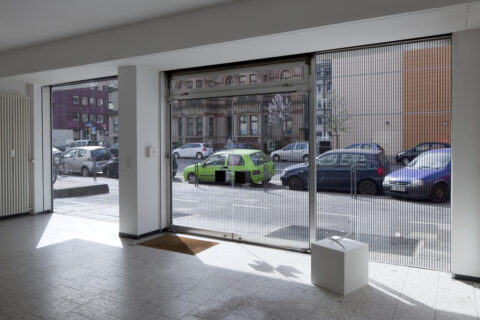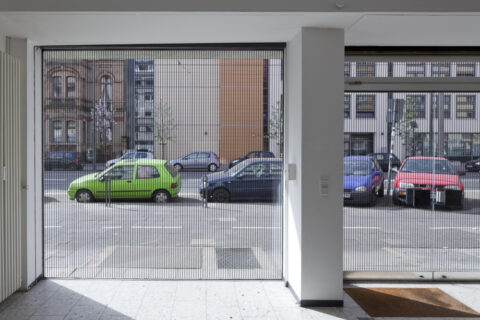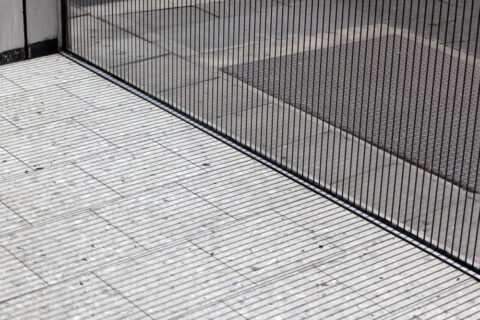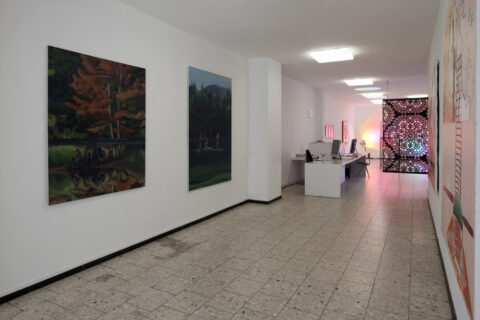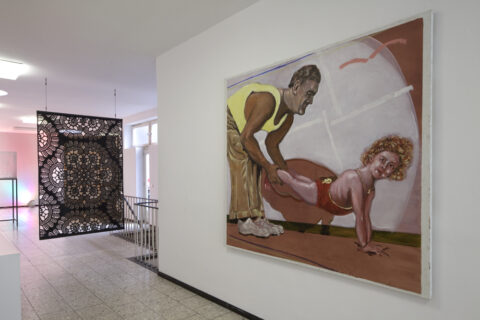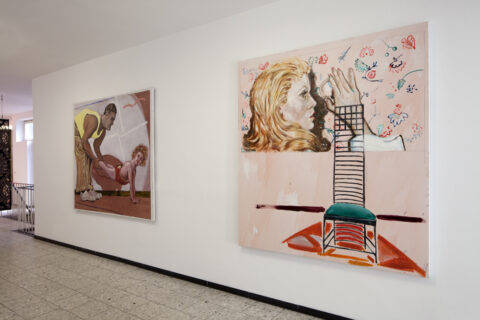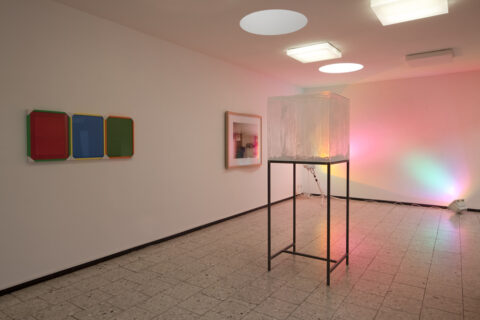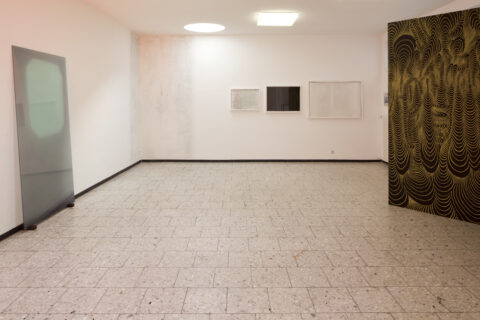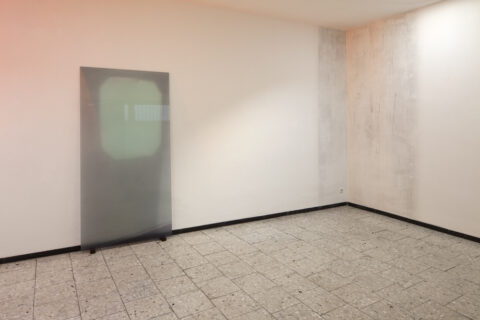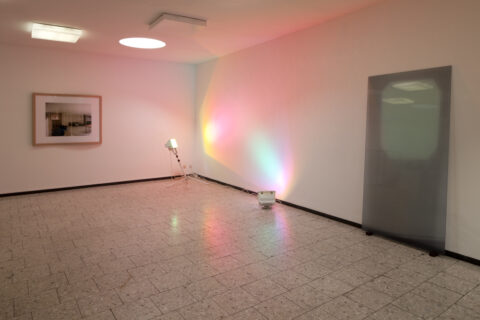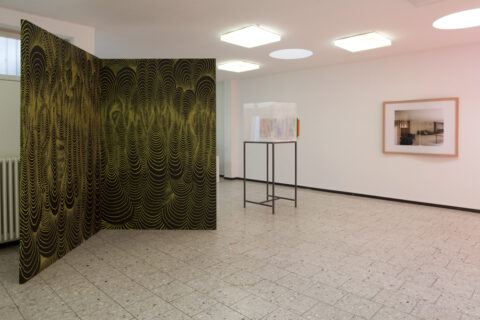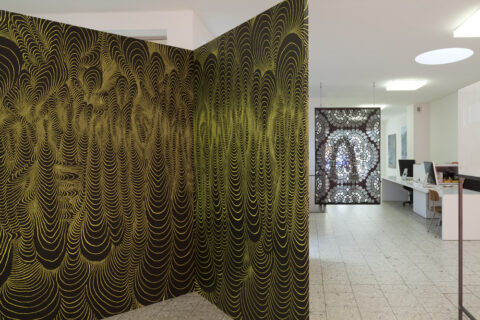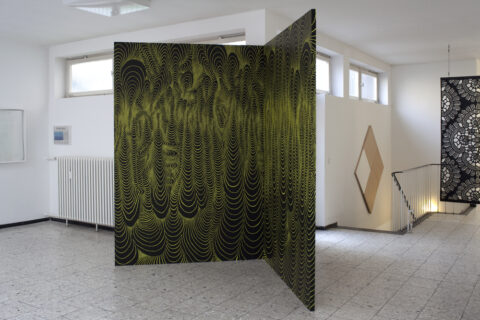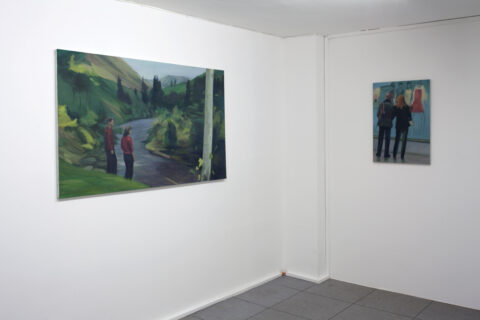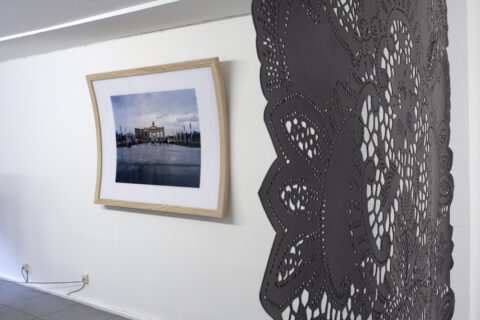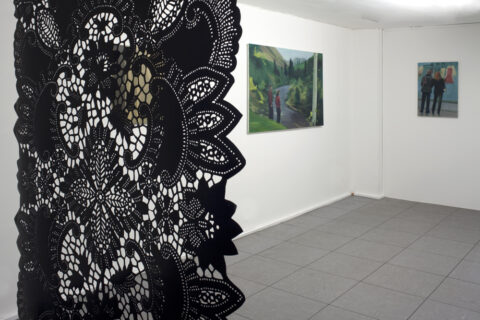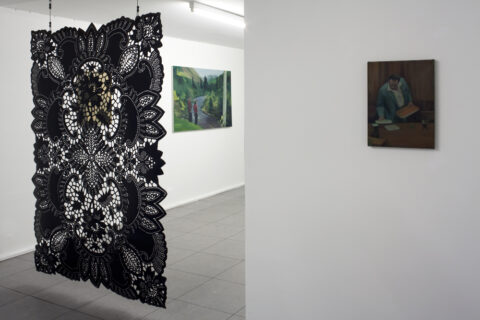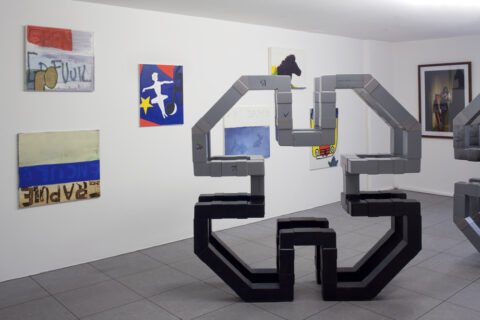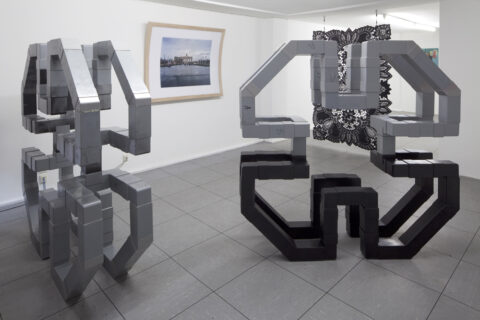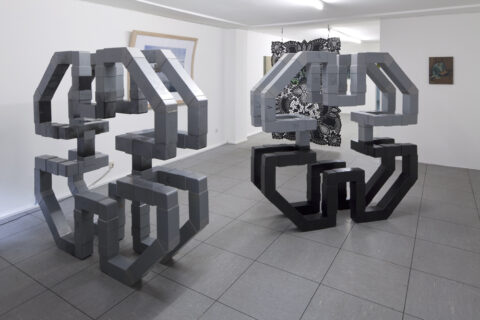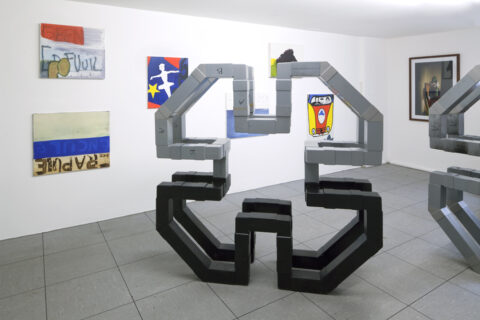Gruppenausstellung VON DORT AUS - NIEUWE KUNST UIT BELGIË
02/04/2011 – 04/06/2011
Eröffnung: Freitag, 01. April 2011, 19-22 Uhr
Opening: Friday, April 1st, 2011, 7-10 pm

„VON DORT AUS – NIEUWE KUNST UIT BELGIË“, 2011
Ausstellungsansicht
Galerie Christian Nagel, Köln
Photo: Simon Vogel
Ausstellungsansicht
Galerie Christian Nagel, Köln
Photo: Simon Vogel
Ausstellungsansicht
Galerie Christian Nagel, Köln
Photo: Simon Vogel
Ausstellungsansicht
Galerie Christian Nagel, Köln
Photo: Simon Vogel
Ausstellungsansicht
Galerie Christian Nagel, Köln
Photo: Simon Vogel
Ausstellungsansicht
Galerie Christian Nagel, Köln
Photo: Simon Vogel
Ausstellungsansicht
Galerie Christian Nagel, Köln
Photo: Simon Vogel
Ausstellungsansicht
Galerie Christian Nagel, Köln
Photo: Simon Vogel
Ausstellungsansicht
Galerie Christian Nagel, Köln
Photo: Simon Vogel
Ausstellungsansicht
Galerie Christian Nagel, Köln
Photo: Simon Vogel
Ausstellungsansicht
Galerie Christian Nagel, Köln
Photo: Simon Vogel
Ausstellungsansicht
Galerie Christian Nagel, Köln
Photo: Simon Vogel
Ausstellungsansicht
Galerie Christian Nagel, Köln
Photo: Simon Vogel
Ausstellungsansicht
Galerie Christian Nagel, Köln
Photo: Simon Vogel
Ausstellungsansicht
Galerie Christian Nagel, Köln
Photo: Simon Vogel
Ausstellungsansicht
Galerie Christian Nagel, Köln
Photo: Simon Vogel
Ausstellungsansicht
Galerie Christian Nagel, Köln
Photo: Simon Vogel
Ausstellungsansicht
Galerie Christian Nagel, Köln
Photo: Simon Vogel
Ausstellungsansicht
Galerie Christian Nagel, Köln
Photo: Simon Vogel
Ausstellungsansicht
Galerie Christian Nagel, Köln
Photo: Simon Vogel
Ausstellungsansicht
Galerie Christian Nagel, Köln
Photo: Simon Vogel
Ausstellungsansicht
Galerie Christian Nagel, Köln
Photo: Simon Vogel
Ausstellungsansicht
Galerie Christian Nagel, Köln
Photo: Simon Vogel
Ausstellungsansicht
Galerie Christian Nagel, Köln
Photo: Simon Vogel
Ausstellungsansicht
Galerie Christian Nagel, Köln
Photo: Simon Vogel
Ausstellungsansicht
Galerie Christian Nagel, Köln
Photo: Simon Vogel
Ausstellungsansicht
Galerie Christian Nagel, Köln
Photo: Simon Vogel
Ausstellungsansicht
Galerie Christian Nagel, Köln
Photo: Simon Vogel
Ausstellungsansicht
Galerie Christian Nagel, Köln
Photo: Simon Vogel
Ausstellungsansicht
Galerie Christian Nagel, Köln
Photo: Simon Vogel
Ausstellungsansicht
Galerie Christian Nagel, Köln
Photo: Simon Vogel
Ausstellungsansicht
Galerie Christian Nagel, Köln
Photo: Simon Vogel
Ausstellungsansicht
Galerie Christian Nagel, Köln
Photo: Simon Vogel
Ausstellungsansicht
Galerie Christian Nagel, Köln
Photo: Simon Vogel
Ausstellungsansicht
Galerie Christian Nagel, Köln
Photo: Simon Vogel
Ausstellungsansicht
Galerie Christian Nagel, Köln
Photo: Simon Vogel
Ausstellungsansicht
Galerie Christian Nagel, Köln
Photo: Simon Vogel
Press Release
The Belgian art scene is formed by the currents of the Avantgarde of the 20th century until today. In the 60s an 70s, Belgium, together with parts of the Netherlands and the German Rhineland, became a worldwirde and outstanding centre.
Antwerp's "Wide White Space", founded by the curator and critic Anny de Decker and the recently deceased artist Bernd Lohaus, the MTL Gallery of Fernand Spillemaeckers in Brussels, which finally merged with the important concept art gallery Art & Project in Amsterdam, as well as Konrad Fischer and Alfred Schmela in Dusseldorf, Parnasse in Wuppertal etc., became very important institutions.
All of them were linked not only to artists like Broodthaers, Panamarenko, Boer and Beuys, but also to the American conceptualists like Carl Andre, Joseph Kosuth or Sol LeWitt, which still had no audience in the US at this time.
In 1969, after a dinner at the house of the collector Hubert Peeters, the art space A 37 90 89 was founded in Antwerp. The coordinator was Kasper König and he invited artists like Ben Vautier, Carl Andre, Joseph Kosuth, Marcel Broodthaers and James Lee Byars.
According to Anny De Decker, Isi Fiszman and James Lee Byars hoped that A 37 90 89 would became an "Institute" like the "Musée d’Art Moderne Départment des Aigles“ by Broodthaers.
A 37 90 89 got regular visits of the German artist's group "Lidl", founded by Jörg Immendorff and Chris Reinecke. "Lidl" devoted itself to "para artistic" activities like sport, what had to be understood as a parody within the context of the Olympic games in Munich in 1972. Lidlsport, for example, organized a football match between A 37 90 89 and "Lidl", as well as a bicycle race from Brussels to Antwerp.
Our desicion to open a branch in Antwerp (CN ANTWERP) in May 2010, was strongly inspired by this history: by its serious, creative and pioneer like side as well as by its playful side. Therefore we are delighted that the Belgian artists, whose work you can see in this exhibition - many of them friends meanwhile - followed our invitation to Cologne.
Of course there is also no common style in Belgium fine arts. Side by side you will find figurative painting, abstract pictures, minimalistic light work, almost vanishing, fluorescent wall-painting, object art, abstract sculpture and a lot more.
In the entrance area, framed by an superb window and wall installation by artists Carla Arocha and Stéphane Schraenen, you will find a motive which is typically associated with Belgium: The Flemish catholicism, vitriolic illustrated by Jan van Imschoot. Momento Mori and design send their regards. The charming installation of ladies shoes from Guillaume Bijl would have even made Andy Warhol jealous.
Vaast Colson built a "gothic" arch, with countless empty bottles of champagne inside: Middle Ages meets party culture; it is not uncommon in Belgium to drive around old churches and buildings with modern trams over and over.
Behind the arch, in the best manner of the late 19th Century, you’ll see paintings by Karin Hanssen which represent the social life in a summer camp of the 50th in the U.S.
The view into the rear gallery room is interrupted by a caoutchouc curtain by Isabelle Copet, with arabesque forms; in the basement you will find a similar piece.
Daniel Dos Santos' abstract works, which refer to the minimalism of Palermo and Knoebel lead on to the second focus of the exhibition. Post-minimalistic positions, contemporary post-avantgarde works at its best.
Only two spotlights produce a dominant but at the same time diffident colorful wall painting by Ann Veronica Janssens. Luc Tuymans blank slide on a glass panel discusses a key issue, that exists not only since the early "EUR" photos by Günther Förg: the void. How do you deal with it? How do you bear it?
Joëlle Tuerlinckx has designed a wall painting for a corner. Her material, a mixture like a magic potion, consists of glue, pigments and various other "toxins. Works on paper, hanging next to the wall painting are done by the same principle. Also the front page of the FAZ, showing the tragedy of the nuclear power plant in Fukushima: Unfortunately also here reigned the unforeseen power of the invisible.
The abstractions by Dennis Tyfus, related to electronic music close the room with a smile.
In the basement you see another highlight of the exhibition: an early painting of Luc Tuymans and a group of new paintings by Walter Swennen, which present a playful looseness. Ives Maes is not only the master of the "aerodynamic" framework, but also a photographic chronicler of the forgotten world exhibitions of the last 100 years. The sculptures of Xavier Mary, made out of cheap plastic encasements following up on early cardboard sculptures by Heimo Zobernig.
